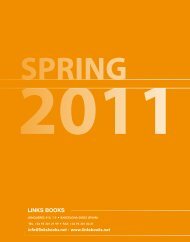pdf 1 - exhibitions international
pdf 1 - exhibitions international
pdf 1 - exhibitions international
You also want an ePaper? Increase the reach of your titles
YUMPU automatically turns print PDFs into web optimized ePapers that Google loves.
finished building to be picked up. Their designs, however, look much more<br />
‘architect designed’ than the American ones.<br />
The lack of lintels implies that the Elgo plastic bricks, (like Lego, of which<br />
more later) interlocked sufficiently to hold together without lintels over the<br />
openings. Another interpretation is that you were not expected to build widespan<br />
openings, thereby dismissing one of Le Corbusier’s desired Five Points of<br />
Architecture, la fenêtre en longueur (the long horizontal window). 15<br />
Apart from the interlocking, another aspect of American Bricks is that they<br />
were designed for building cities. Indeed Halsam and Elgo made all the components<br />
of a city and its hinterland. There were American Logs out in the sticks,<br />
American Bricks (either wooden or plastic) in the suburbs, and American Skyline,<br />
an Elgo set for making skyscrapers, 16 in the Central Business District. As Halsam’s<br />
leaflet says, ‘Many families buy set after set of…Bricks – permanent models are<br />
built at small expense – eventually complete…modern cities result.’ The idea of<br />
building a city is of course a great way to sell more bricks, and thinking about<br />
sales success will bring us to Lego.<br />
But before Lego there was Hilary Page, a British toy designer who founded<br />
a company called Kiddicraft in 1932, using his savings of £100. 17 He researched<br />
and wrote on child development, and was interested in using plastics to make<br />
toys because he was concerned about small children chewing the paint off<br />
wooden toys; 18 he introduced his ‘Sensible Toys’, made of plastics, in 1937. 19 Page<br />
marketed his new Kiddicraft Self-locking Building Bricks after the Second<br />
World War, when plastics became more widespread. He applied for a patent for<br />
these in 1944 and it was granted in 1947, 20 following an earlier patent for square<br />
bricks. The Self-locking Bricks were rectangular (brick shaped, in fact) with<br />
eight circular studs on the top, and look very like Lego. They were not a great<br />
success for Kiddicraft, or at least not a major part of their sales, and the company<br />
suffered further problems that may have been part of the reason for Page’s<br />
suicide in 1957. 21<br />
In Billund, Denmark, in the 1930s the carpenter and joiner Ole Kirk<br />
Christensen began making wooden toys, because the Depression had hit the<br />
building trade. Christiansen’s quality toys were a success, and in 1934 he named<br />
his company Lego, a contraction of the Danish words ‘Leg Godt’, or ‘play well’,<br />
and, for Classical scholars, to take out, pick out, extract, remove (among other meanings)<br />
in Latin. 22 Certainly there is a lot of picking out and extracting involved in<br />
playing with Lego, accompanied by the distinctive sound of raking through the<br />
pieces like a cat in a litter tray. In 1947 Christiansen, who, like Page, saw that his<br />
future lay in plastics, bought an injection-moulding machine from a firm in<br />
London, and received with it, presumably to show what it could do, a sample of<br />
the Kiddicraft Self-locking bricks. 23 Lego soon made use of their new machine<br />
and came out with a copy of Page’s bricks, called Automatic Binding Bricks, 24 but<br />
with some changes, as detailed in a court case that Lego later brought against a<br />
firm they accused of copying their design. 25<br />
Various firms subsequently made plastic bricks that were very like Lego,<br />
including Airfix, who are better known for their plastic model kits. The 1960s<br />
Airfix Betta Bilda26 is definitely much harder to assemble than Lego27 and it<br />
was initially designed only for making buildings, but it is one of the few<br />
building toys that makes a ‘proper’ roof, out of separate tiles. Like Wenebrik<br />
roofs, the Betta Bilda ones, which are green, are very hard to put together or<br />
to take apart.<br />
Lego took the pirating of their bricks very seriously and back in 1987 were<br />
described as one of the most actively litigious companies in terms of intellectual<br />
property. 28 However, the result of their court case in 198829 has meant that copies<br />
of Lego bricks are no longer illegal, and there are now a number of versions that<br />
do the same sort of thing and that fit with genuine Lego, such as the Chinese<br />
‘Enlighten Brick’. However, Lego is still the authentic original product. The final<br />
part of Lego’s current success was the 1958 redesign of the brick to incorporate<br />
tubes on the underside that improved its ability to stay connected (called ‘clutch<br />
power’ by Lego), with the result that all Lego bricks made since 1958 will still fit<br />
together with the company’s most modern products. Over fifty years of production<br />
is an impressive record, rivalled only by Richter’s Blocks and Meccano. The<br />
revised system for connecting Lego bricks also made it possible to manufacture<br />
sloping bricks, 30 which meant that one’s toy houses needed no longer either to<br />
have flat roofs or look like ziggurats.<br />
Even before the revised brick design, Lego were busy thinking about urban<br />
schemes, and in a key decision the bricks, which had become Lego Mursten (Lego<br />
Bricks) in 1953, became in 1955 the Lego Mursten System i Leg (Lego Bricks System<br />
of Play). 31 Here Lego did for toy bricks what Märklin had done in the nineteenth<br />
century for toy trains: they made a system. Halsam had suggested building a city<br />
by using lots of American Bricks, implying that a city is formed when two or<br />
three houses come together. Lego, on the other hand, applied the principles of<br />
municipal planning and made not just houses but a whole scheme capable of<br />
180 Lego and the Green City Lego and the Green City 181





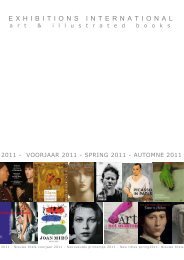
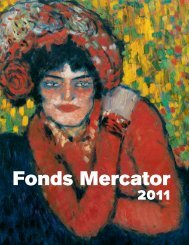
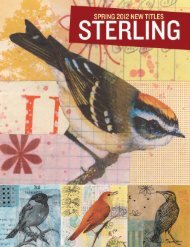

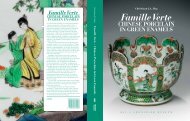
![01 -[BE/INT-2] 2 KOL +UITGEV+ - exhibitions international](https://img.yumpu.com/19621858/1/184x260/01-be-int-2-2-kol-uitgev-exhibitions-international.jpg?quality=85)




